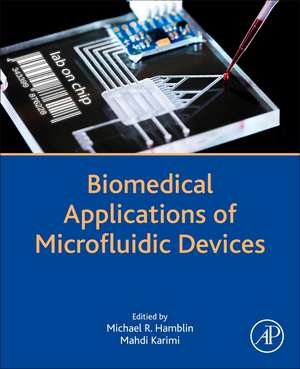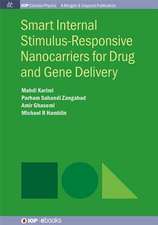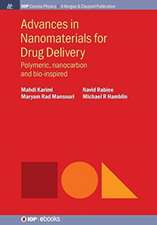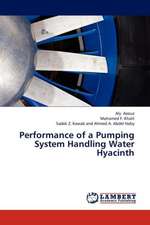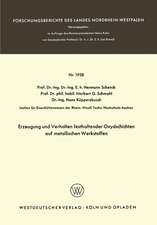Biomedical Applications of Microfluidic Devices
Editat de Michael R. Hamblin, Mahdi Karimien Limba Engleză Paperback – 18 noi 2020
This book addresses the fundamental concepts and fabrication methods of microfluidic systems for those who want to start working in the area or who want to learn about the latest advances being made. The subjects covered are also an asset to companies working in this field that need to understand the current state-of-the-art. The book is ideal for courses on microfluidics, biosensors, drug targeting, and BioMEMs, and as a reference for PhD students. The book covers the emerging and most promising areas of biomedical applications of microfluidic devices in a single place and offers a vision of the future.
- Covers basic principles and design of microfluidics devices
- Explores biomedical applications to areas such as tissue engineering, organ-on-a-chip, pathogen identification, and drug and gene delivery
- Includes chemical applications in organic and inorganic chemistry
- Serves as an ideal text for courses on microfluidics, biosensors, drug targeting, and BioMEMs, as well as a reference for PhD students
Preț: 821.28 lei
Preț vechi: 1052.51 lei
-22% Nou
Puncte Express: 1232
Preț estimativ în valută:
157.17€ • 163.88$ • 130.62£
157.17€ • 163.88$ • 130.62£
Carte tipărită la comandă
Livrare economică 14-28 martie
Preluare comenzi: 021 569.72.76
Specificații
ISBN-13: 9780128187913
ISBN-10: 0128187913
Pagini: 350
Ilustrații: Approx. 150 illustrations (150 in full color)
Dimensiuni: 191 x 235 mm
Greutate: 0.6 kg
Editura: ELSEVIER SCIENCE
ISBN-10: 0128187913
Pagini: 350
Ilustrații: Approx. 150 illustrations (150 in full color)
Dimensiuni: 191 x 235 mm
Greutate: 0.6 kg
Editura: ELSEVIER SCIENCE
Public țintă
Biomedical Engineers, Mechanical Engineers, Chemical Engineers, Electrical Engineers, nanotechnologists, post-graduates in biomedical engineering and nanotechnology. Biomedical researchers, chemists, microbiologists, pharmaceutical scientistsCuprins
1. Microfluidic devices: Concepts
2. Microfludic devices: Synthesis approaches
3. Design of microchannels in microfluidic devices
4. Microarray technologies
5. Organ-on-a-chip devices
6. Microfluidic devices for pathogen detection
7. Microfluidic devices for detection of cancer cells
8. Microfluidic devices for drug delivery systems
9. Microfluidic devices for gene delivery systems
10. Microfluidic devices for tissue engineering
11. Microfludics in organic chemistry
12. Microfludics in inorganic chemistry
13. Paper based microfluidic devices
14. Smart phone based microfluidic devices
15. Microfluidics: Future perspectives
2. Microfludic devices: Synthesis approaches
3. Design of microchannels in microfluidic devices
4. Microarray technologies
5. Organ-on-a-chip devices
6. Microfluidic devices for pathogen detection
7. Microfluidic devices for detection of cancer cells
8. Microfluidic devices for drug delivery systems
9. Microfluidic devices for gene delivery systems
10. Microfluidic devices for tissue engineering
11. Microfludics in organic chemistry
12. Microfludics in inorganic chemistry
13. Paper based microfluidic devices
14. Smart phone based microfluidic devices
15. Microfluidics: Future perspectives
